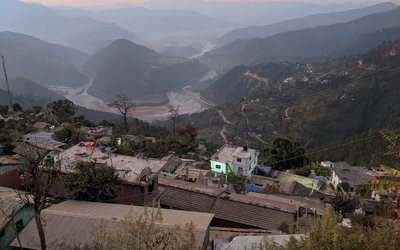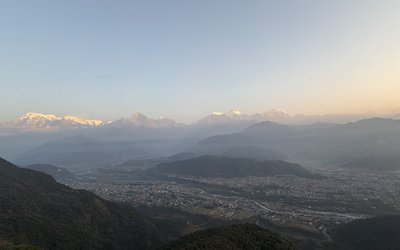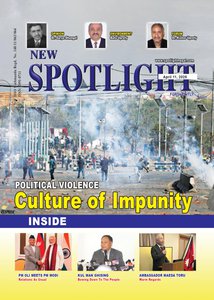
The Himalayan republic of Nepal is experiencing a resurgence of pro-monarchy protests in recent weeks, fueled by rising frustration with the country’s political system. Supporters of the former king and nationalist organizations are calling for the restoration of the Hindu monarchy and the abolition of the federal democratic republic.
Corruption, political instability, economic hardships, and disillusionment with the promises of democracy fuel this movement. However, does returning to monarchy provide a solution, or is it merely a longing for a past that might not have been as glorious as it seems?
A March 28 protest turned violent, with police charging batons and lobbing teargas shells at the protesters. Two people were killed, including a video journalist who was burned alive when the building he was filming from was set ablaze. Protesters and police blame each other for the fire. A second victim was a bystander shot by the police. Numerous vehicles and buildings were set ablaze.
The government has blamed the violence on former King Gyanendra Shah, who released a video message a few weeks earlier, urging Nepalis to unite with him to save the nation. The protesters attributed the deaths and destruction to government heavy-handedness and agent provocateurs.
Hopes Defied
Nepal’s monarchy was abolished in 2008, and the country transitioned into a secular, federal democratic republic in 2015. This system has not met the expectations of its people. The succession of more than a dozen prime ministers in the last two decades has resulted in weak governance, instability, and a lack of long-term planning.
Corruption permeates all levels, as politicians are accused of misusing state resources, thereby undermining public trust in the government. Despite countless election promises, economic opportunities remain limited, compelling thousands of Nepalis to seek employment abroad.
Federalism aimed to bring governance closer to the people; however, it created an additional layer of bureaucracy, leading to increased government expenditure with little progress. Many Nepalis believe this governance experiment has proven ineffective and unsustainable for a resource-constrained nation.
Royalists argue that Nepal’s problems arise from its shift away from being a Hindu state and from the monarchy. For centuries, Nepal stood as the world’s only Hindu kingdom, and many believe that secularism has undermined the nation’s cultural and religious identity. Concerns have surfaced that foreign-funded missionary activities are eroding Nepal’s traditions, leading to increasing calls for the reinstatement of Hindu statehood.
Advocates of monarchy assert that the royal family has traditionally offered stability and unity. Despite its shortcomings, the Shah dynasty maintained Nepal’s sovereignty and national identity. Mr. Shah continues to garner a devoted following, with his public appearances and remarks bolstering the royalist movement.
Foreign Influence
Another significant concern is Nepal’s increasing vulnerability to foreign influence. Nestled between two powerful neighbors – India and China – Nepal often finds itself caught in their geopolitical rivalry. India has long exerted substantial political and economic influence, while China has aggressively expanded its presence through infrastructure projects. Many Nepalis believe that external interference threatens their nation’s sovereignty.
Additionally, agreements like the U.S. Millennium Challenge Corporation grant have prompted protests due to concerns that they act as instruments of foreign control. Border disputes with India in areas such as Kalapani, Lipulekh, and Limpiyadhura further intensify nationalist sentiments, leading many to believe that Nepal’s leaders lack the resolve to safeguard the nation’s territorial integrity.
While the monarchy represents stability for some, it does not provide a solution to Nepal’s deep-rooted issues. Corruption, economic struggles, and governance failures have continued under the monarchy. Restoring the crown does not inherently solve Nepal’s challenges, nor does reverting to a Hindu state guarantee national unity.
However, the growing dissatisfaction with the current political order should serve as a wake-up call for Nepal’s leaders. The failure of democratic governance has left people yearning for alternatives. Rather than dismissing royalist movements as regressive, the political establishment must address the people’s genuine concerns – economic growth, governance reforms, and national sovereignty.
Nepal stands at a crossroads. Whether the country chooses to restore the monarchy or strengthen its republic, one thing is clear: the status quo is no longer acceptable to the people.
- Nepal: Revolution, Regression and Rampage
- Apr 01, 2025













